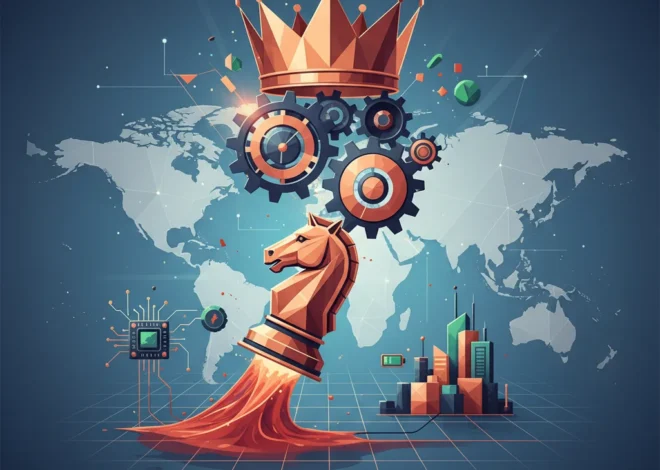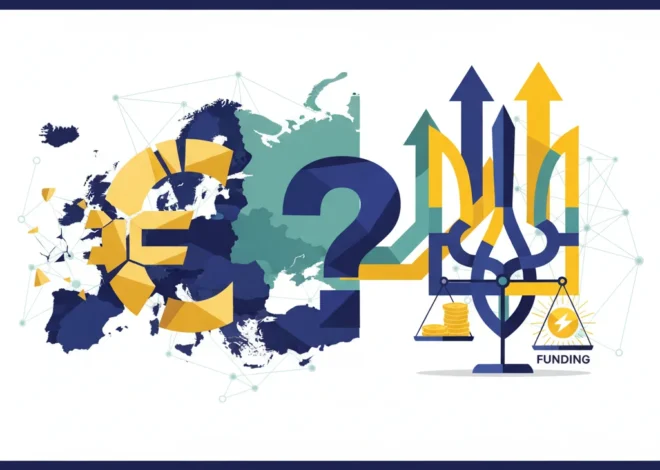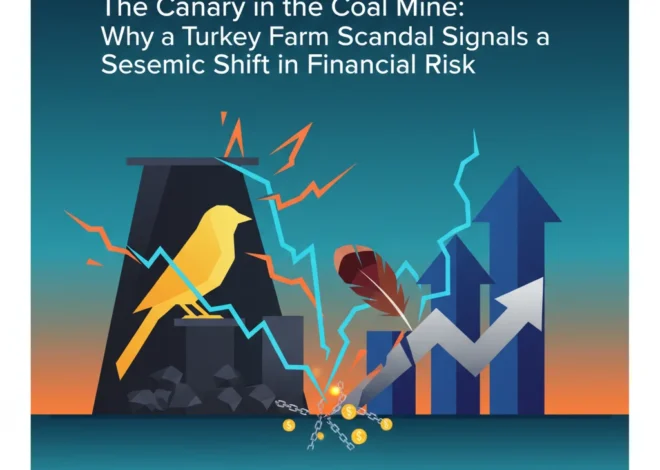
The Trillion-Dollar Deforestation Dilemma: Why Weakening the EU’s New Law is a Financial Catastrophe in the Making
In the intricate world of global finance, risk is a currency of its own. Traders, investors, and bankers build entire careers on pricing it, managing it, and hedging against it. Yet, for decades, one of the most significant long-term risks to the global economy has remained conspicuously absent from most balance sheets: deforestation. The coffee in your cup, the chocolate bar you snack on, the leather in your car—each product is a link in a vast supply chain that too often begins with the clearing of vital forests. This hidden liability is about to be forced into the open, and the financial world is scrambling to react.
At the heart of this seismic shift is the European Union’s landmark Deforestation Regulation (EUDR). It’s one of the most ambitious pieces of environmental legislation ever conceived, designed to sever the link between consumer products sold in the EU and the destruction of global forests. However, as this regulation nears its implementation, a powerful chorus of lobbyists and partner countries is pressuring Brussels to dilute its provisions and delay its timeline. As argued by Rick Jacobsen of the Environmental Investigation Agency, caving to this pressure would be a monumental mistake—not just for the planet, but for the stability and integrity of the global financial system.
Unpacking the EUDR: More Than Just Trees
To understand the high-stakes battle unfolding, we must first grasp what the EUDR is. In essence, it’s a market access law. It mandates that any company placing certain commodities or derived products on the EU market must first prove they are not linked to deforestation that occurred after December 31, 2020. The regulation targets seven key commodities: palm oil, cattle, soy, coffee, cocoa, timber, and rubber.
The operational core of the law is “mandatory due diligence.” Companies must collect precise geographic coordinates of the land where their commodities were produced. This data allows for satellite cross-referencing to ensure the land wasn’t deforested. It’s a radical move away from voluntary corporate pledges toward legally binding accountability. The implications for the global economy are profound, fundamentally altering the rules of engagement for international trade and supply chain management.
This isn’t merely an environmental policy; it’s a market-shaping economic tool. For decades, the cost of deforestation—loss of biodiversity, carbon emissions, and social disruption—was an externality, a cost borne by society, not by the producers or consumers of the resulting goods. The EUDR effectively internalizes that cost, forcing it onto the corporate income statement and, by extension, into the valuation models used in the stock market.
The Financial Sector: The Next Frontier of Accountability
While the initial focus of the EUDR is on companies that produce and trade physical goods, the original intent and the most controversial element of the regulation is its eventual application to the financial sector. The logic is simple and powerful: deforestation doesn’t just happen; it’s financed. A 2023 report from Global Canopy found that financial institutions have provided over $1 trillion in financing to companies in forest-risk commodity supply chains without having adequate deforestation policies in place.
Extending the EUDR to cover banking and investing would mean that banks, asset managers, and pension funds would be legally required to conduct due diligence on their own portfolios. They would need to ensure their loans, investments, and underwriting services are not fueling illegal deforestation. This represents a paradigm shift in financial risk management. Suddenly, a bank’s loan to a Brazilian beef producer or an investment fund’s stake in an Indonesian palm oil company becomes a source of direct regulatory and reputational liability.
The pushback against this provision is immense. Financial industry groups argue that tracing the use of capital through complex corporate structures to a specific plot of land is unfeasible. They warn of capital flight from emerging markets and a chilling effect on the global economy. Yet, this argument overlooks a critical reality: the technology to solve this problem is rapidly emerging. The worlds of financial technology (fintech) and geospatial data are converging, offering new tools for transparency. Satellite imagery, AI-powered analytics, and even blockchain-based ledgers for supply chain verification can provide the very traceability that was once considered impossible.
Quantifying the Stakes: A Look at the Commodities in Question
The pressure to weaken the EUDR stems from the sheer economic scale of the commodities involved. These are not niche products; they are foundational pillars of the global consumer economy. Understanding the market dynamics reveals why the financial stakes are so high.
Below is a table outlining the key commodities, their market significance, and the associated financial risks now being brought into sharp focus by the EUDR.
| Commodity | Major Producing Regions | Estimated Global Market Value (Annual) | Key Financial Risk Exposure Under EUDR |
|---|---|---|---|
| Palm Oil | Indonesia, Malaysia | ~$65 Billion (source) | Supply chain disruption, stranded assets (non-compliant plantations), investor divestment. |
| Soy | Brazil, USA, Argentina | ~$160 Billion | Loan defaults from non-compliant farms, reputational damage for financiers, trading volatility. |
| Cattle (Beef & Leather) | Brazil, USA, EU | ~$400 Billion (Beef) | Market access loss for major exporters, reduced valuation for meatpacking giants, banking liability. |
| Cocoa | Côte d’Ivoire, Ghana | ~$25 Billion | Price shocks due to supply shortages, compliance costs for chocolate majors, smallholder financing challenges. |
| Coffee | Brazil, Vietnam, Colombia | ~$130 Billion | Reputational risk for global brands, need for investment in traceability tech, impact on commodity trading. |
This data illustrates that the EUDR isn’t a fringe issue. It directly impacts hundreds of billions of dollars in annual trade and the trillions of dollars in investing and credit that underpin it. For a financial institution, ignoring this is akin to ignoring interest rate risk—it’s a fundamental failure of fiduciary duty.
From Regulatory Burden to a New Economic Paradigm
Opponents of the EUDR frame it as an onerous burden that will stifle trade and hurt developing nations. But this perspective misses the bigger picture. The regulation is not a wall; it’s a filter. It creates a powerful incentive for a global race to the top, rewarding producers, companies, and entire economies that can prove their supply chains are clean.
For forward-thinking investors and businesses, this regulation is an opportunity. Here’s how:
- Competitive Advantage: Companies that invest in transparent, deforestation-free supply chains now will secure access to the lucrative 450-million-consumer EU market, leaving less prepared competitors behind.
- De-risking Investments: For portfolio managers, the EUDR provides a clear, legally-defined metric for environmental risk. Screening for EUDR compliance is a powerful tool to de-risk a portfolio from future regulatory shocks, reputational damage, and stranded assets.
- Spurring Innovation: The demand for foolproof traceability is a massive catalyst for innovation in financial technology. From satellite monitoring firms to blockchain platforms, a new ecosystem of “RegTech” (Regulatory Technology) is emerging to meet this need.
The argument that smallholders in developing countries will be unfairly punished is valid, but it’s a reason to increase support and investment, not to abandon the law. As the original FT letter points out, the EU and its member states must “ramp up financial and technical assistance” to help these producers meet the new standard. This is a challenge of implementation, not a flaw in the law’s premise.
Conclusion: A Line in the Sand for the Global Economy
The European Union is at a crossroads. It can bow to the immense pressure from industry and diplomatic partners and effectively gut the EUDR by delaying its implementation and carving out the financial sector. Or, it can hold the line, cementing its role as a global leader in sustainable policy and forcing a long-overdue reckoning in the world of finance.
Weakening this law would send a terrible signal: that when profits and planetary health collide, it is the latter that must give way. It would tell the market that environmental risk is still not *real* financial risk. Conversely, holding firm will accelerate the transition to a more resilient and transparent global economy where the cost of environmental destruction is no longer an externality to be ignored. It will catalyze innovation in fintech and redefine best practices in investing and banking. The EUDR is more than a law about deforestation; it’s a test of whether our economic system is capable of evolving to face the existential challenges of the 21st century. For the sake of both our forests and our financial future, it’s a test we cannot afford to fail.


